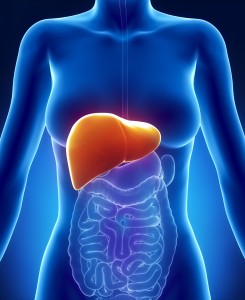Liver Disease, Alcoholism & Social Security Disability
 The most common forms of liver disease I see in my disability practice are liver cancer, hepatitis, cirrhosis, and alcoholic liver disease. All of these medical conditions can be severe enough to prevent a person from working. This post describes the most common types of liver disease and how they may be used as a basis for social security disability benefits.
The most common forms of liver disease I see in my disability practice are liver cancer, hepatitis, cirrhosis, and alcoholic liver disease. All of these medical conditions can be severe enough to prevent a person from working. This post describes the most common types of liver disease and how they may be used as a basis for social security disability benefits.
Liver Cancer
Assuming they are not working, a person diagnosed with liver cancer should apply for social security disability benefits. The Social Security Administration (SSA) has promulgated regulations that provide for the expedited evaluation of claimants diagnosed with liver cancer. Liver cancer is one of over 100 medical conditions on this “compassionate allowance” list. Not only should the claim be handled quickly, but the claimant should be granted benefits so long as the diagnosis is clear in the medical records.
Hepatitis
A diagnosis of hepatitis means that the liver has become inflamed. The cause is usually a virus (hepatitis A, B, C) although it can be caused other ways, including alcohol consumption. Most of the claimants I have represented with hepatitis generally complain of intense fatigue and weakness. Some have also complained of loss of appetite, jaundice, and being prone to sickness.
If you recall, there are two primary ways to prove disability. (See 5 Step Disability Evaluation Process). One way is to prove that your condition meets the medical criteria as defined in the Listing of Impairments. The other way is to prove that your medical condition creates symptoms which prevent you from being able to work.
Most of the claimants with hepatitis in my practice have not been able to meet the Listing of Impairments for liver disease. Instead we usually prove that the claimant is unable to work because of a decrease in productivity. The argument is that overwhelming fatigue will lead to frequent absences from work and will also impair productivity while at work. If the productivity is decreased by 20% or more, then the worker would not be able to sustain gainful employment.
Some claimant’s may also be disabled due to the treatment for hepatitis. The treatment regimen usually involves being medicated with interferon and ribavirin for 12 months. The side affects of the medications (think chemotherapy type side effects) during those 12 months are usually much worse than the actual symptoms of the hepatitis. During those 12 months of treatment it is often easy to prove disability. The problem is that the impairment must last at least 12 months, so a successful course of treatment may end a claim for social security disability benefits.
Cirrhosis
Cirrhosis occurs when the liver tissues die and are replaced by fibrous tissues. Cirrhosis can be caused by many things including chronic hepatitis and alcohol use. The symptoms include fatigue, malaise, weakness, nausea, loss of appetite, jaundice and altered mental status (e.g., when the liver function is severely impaired, the person can appear to be intoxicated).
Claimants with cirrhosis can often meet the Listing of Impairments criteria. This can often result in decisions without the need for multiple appeals or hearings. To meet the listing criteria, a claimant must either be awaiting a liver transplant and/or be diagnosed as having “end stage liver disease.” Whether one has end stage liver disease involves the results of lab results measuring creatinine and bilirubin levels. The precise levels and the computations can be found in the Listing.
For claimants who don’t meet these listings, all is not lost. The symptoms associated with cirrhosis are usually more severe than those claimants with hepatitis alone. The symptoms will often be severe enough to decrease productivity enough to prevent all work.
Alcoholic Liver Disease
Over-consumption of alcohol can cause both hepatitis and cirrhosis. It can lead to all the conditions and symptoms described above. Can a claimant who suffers from both liver disease and alcoholism obtain social security disability benefits?
SSA rules provide that if substance use/abuse is material to the finding of disability, then the claimant is not entitled to disability benefits. This might lead you to the conclusion that those with alcohol induced liver failure cannot be granted disability benefits. This is not the case. If the reason for the disability is a poorly functioning liver (as a result of any cause) then the claimant is entitled to disability benefits. If the reason for the disability is alcoholism, the claimant is not entitled to disability.
Let me illustrate. If the person’s productivity has been reduced because they are frequently late and/or absent due to the abuse of alcohol, then they are not considered disabled. Frequent benders cannot be the basis of disability. In this case, alcoholism is “material to the finding of disability.” However, if the alcohol abuse has caused a condition, like cirrhosis, which by itself causes the decrease in productivity – the claimant is entitled to the disability benefits. In the latter case, the use of alcohol is not “material” to the disability.
By David Galinis
